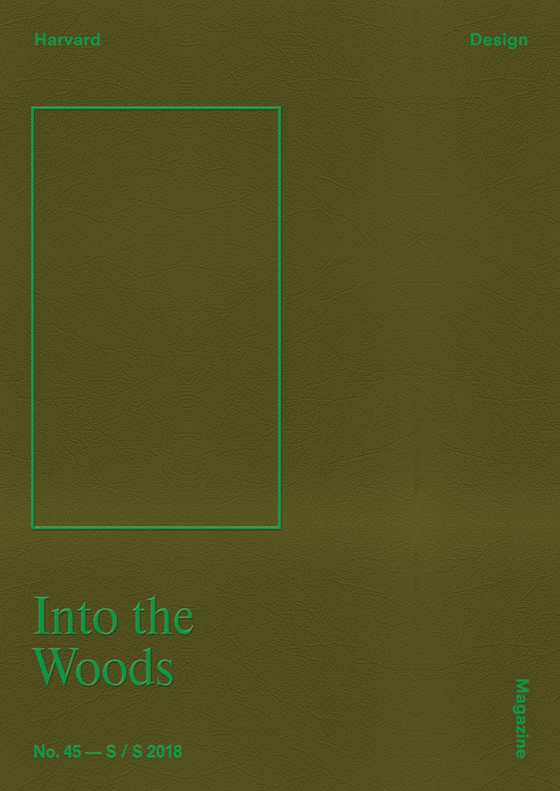A Cabin of Curiosity
45: Into the Woods
Out of stock

To go “into the woods” is to enter both nightmare and wonderment, chaos and serenity. The woods are the threatening realm of wolves and witches, yet also a space of peace and introspection. They confound and illuminate, disorient and clarify, endanger and protect. The woods are where we “come to our senses,” and where we embrace our wilder selves. They are a space of complex life forms and ecological destruction; of growth and decay; of fantasy and ritual; of secrets and control; of hiding and the hidden.
The woods are often framed as a nonurban place; an entity separate from, and opposed to, the city—even the world; an eternal refuge that can smoothly be entered and exited, gone into and back out of. But how much of our woods still remains to go into—and on what terms?
As designers, we encounter the woods as building site, as obstacle, and as resource—territory to be cleared, but also to be preserved, cultivated, tamed, or simulated.
Wood itself—along with its products like lumber, wood pulp, silvichemicals, and charcoal—fuel the building industry and feed architecture. In a period of accelerated climate change, the planet’s woods are disappearing, burning up, threatening and threatened by human existence. How can we holistically address the woods and its ecosystems, and the life and life-giving power they contain?
This issue of Harvard Design Magazine treks into the woods to come to terms with its precarious status as habitat and resource, and to challenge assumptions about wood as material. We won’t be “out of the woods”—this looping conundrum—any time soon, even if the woods as we once knew it, and might still imagine it, has ceased to exist. At the intersection of wilderness, urbanization, and myth, “Into the Woods” embraces contradiction, challenges destruction, and revisits our roots, biological and architectural alike.
Jennifer Sigler
Eelco Hooftman
Jack Halberstam
Stephen Pyne
Teresa Moller
Lawrence Buell
Maria Thereza Alves
Giorgio Agamben
Alessandro Bava
Dilip da Cunha
Maria Tatar
Carolyn Finney
Jessica Dempsey
Tuomas Toivonen
Daniel Ibañez
Jonah Susskind
Daniel A. Barber, Erin Putalik
T. J. Demos
Sonja Dümpelmann
Casey Mack
Milica Topalovic
Brett Schneider
Japhy Wilson
Dogma
Dan Handel
Rosetta S. Elkin
Eduardo Kohn, Prathima Muniyappa, Rhea Shah
James Lapine, Mahfuz Sultan
Janet Cardiff, Silvia Benedito
Anna Tsing, Rosetta S. Elkin
Bas Princen, Giovanna Borasi
Fabrizio Gallanti
Erle C. Ellis
Robert Pogue Harrison
Jana VanderGoot
Salmaan Craig
Oliver J. Curtis
Danielle Choi
Ken Tadashi Oshima
Phillip R. Denny
Fionn Byrne
Elena Barthel
Andrew Witt
Mary Pansanga, Tang Chang
Emily Waugh
Katie Holten
Nikos Katsikis
Alexander Brodsky, Markus Lähteenmäki, Matvei Yankelevich
Sheila Kennedy
Paulo Tavares
Editor in Chief
Jennifer Sigler
Deputy Editor
Leah Whitman-Salkin
Production Manager
Meghan Ryan Sandberg
Creative Direction & Design
Jiminie Ha & Fahad Al–Hunaif
With Projects, Inc.
Editorial Board
Silvia Benedito, Edward Eigen, Rosetta S. Elkin, Eric Höweler, Kiel Moe, Charles Waldheim
Copy Editor
Frances Malcolm
Proofreader
Rebecca McNamara
Interns
Gina Ciancone, Elias Logan
Printer
AS Printon Trükikoda, Tallinn, Estonia